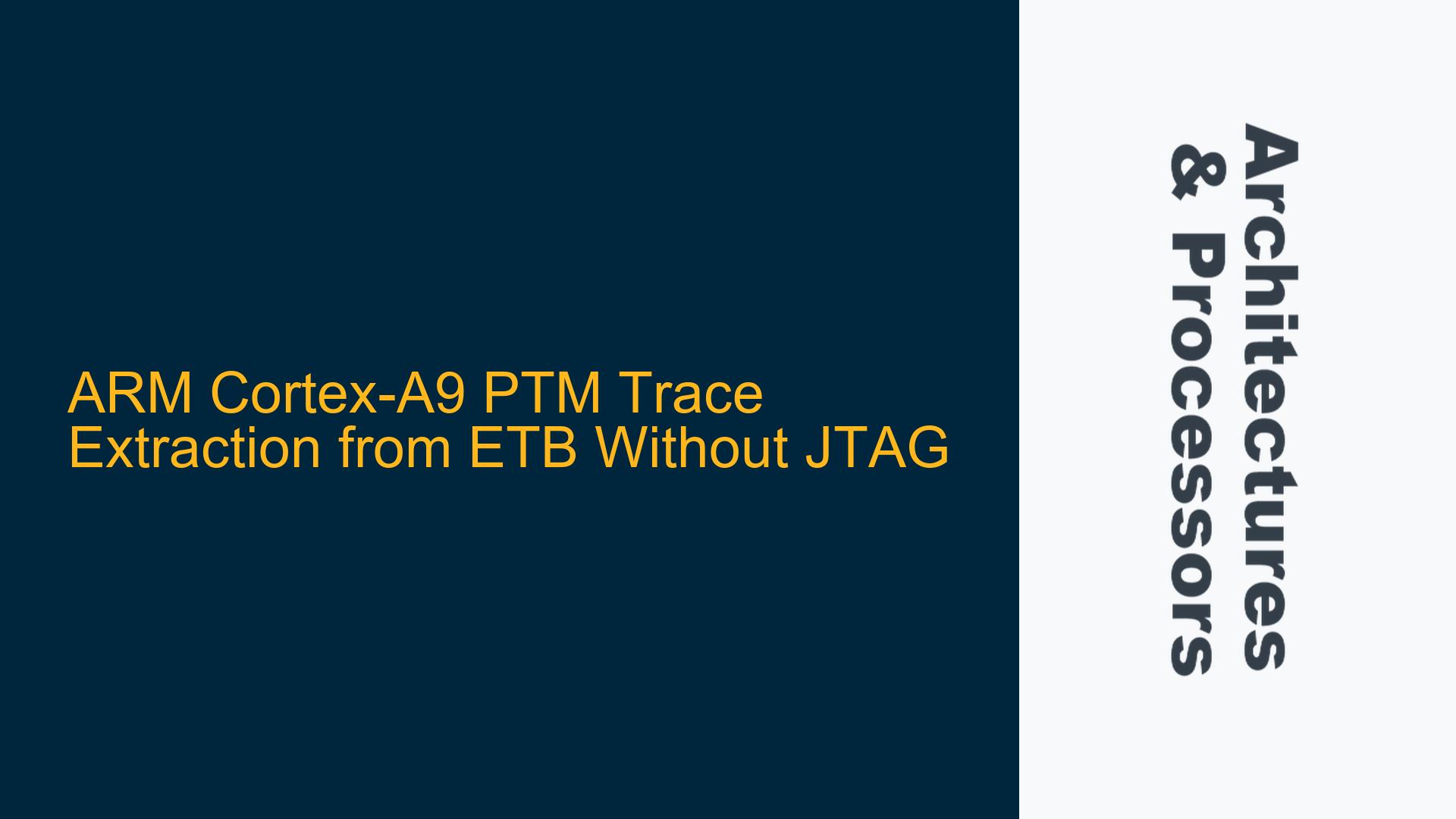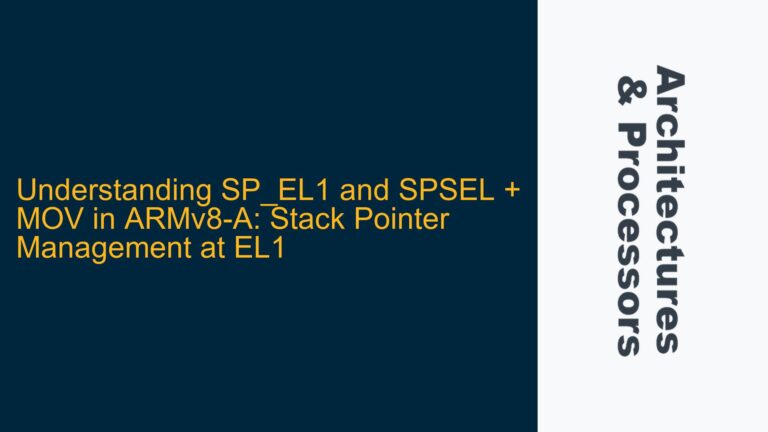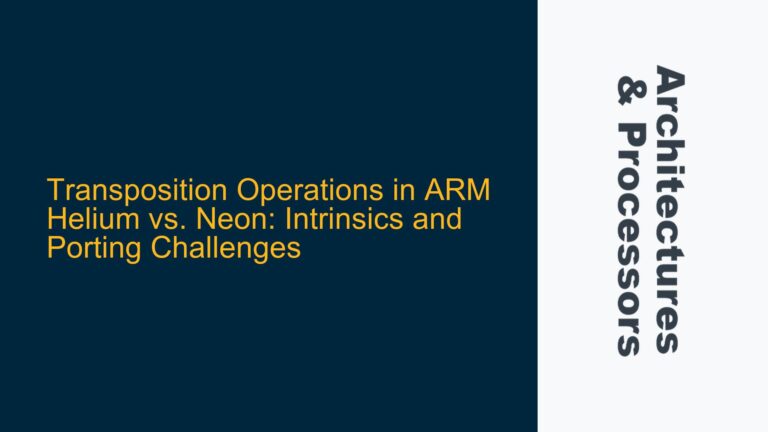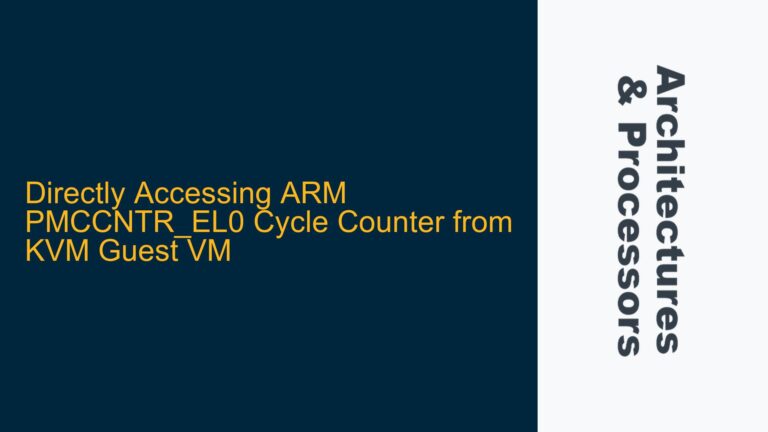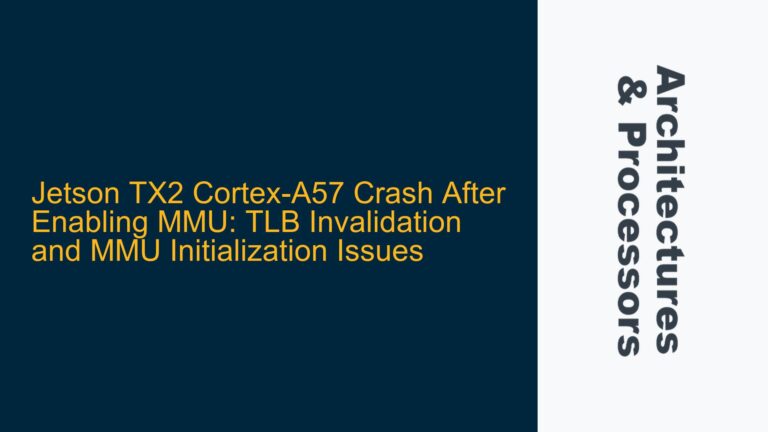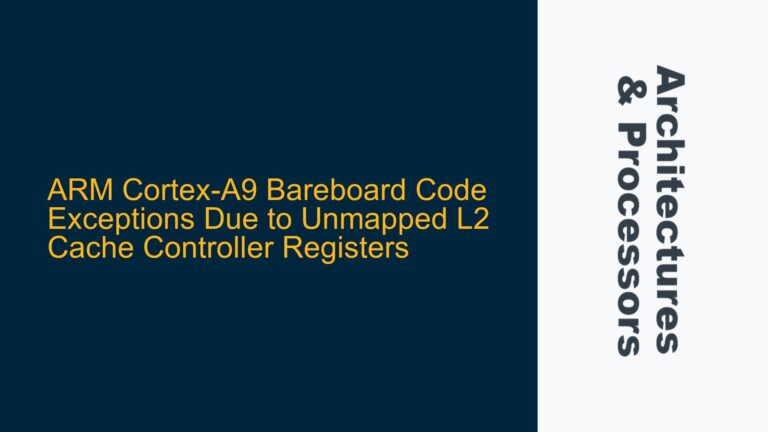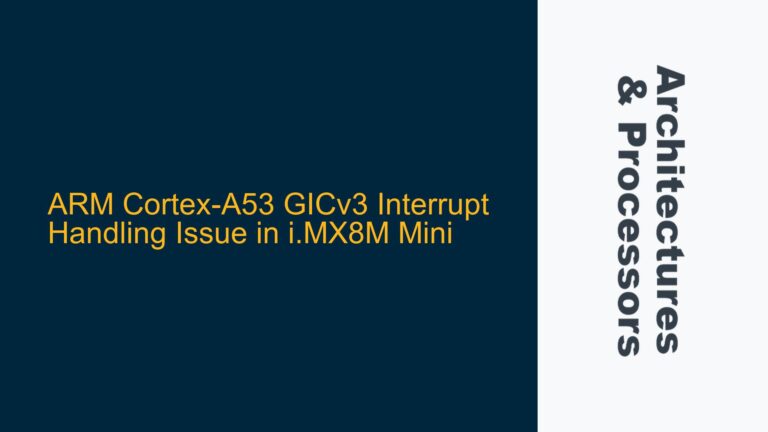ARM Cortex-A9 PTM Trace Extraction Challenges in ETB Buffer
The ARM Cortex-A9 processor, widely used in embedded systems, features Program Trace Macrocell (PTM) and Embedded Trace Buffer (ETB) for real-time instruction and data tracing. PTM generates compressed trace packets that are stored in the ETB, a circular buffer within the processor. However, extracting meaningful trace data from the ETB without using JTAG or external adapters can be challenging, especially when the buffer contains seemingly meaningless data such as ffffffff080100000000000000000000. This issue often arises due to misconfigurations in the PTM, ETB, or system-level settings, leading to incomplete or corrupted trace data.
The primary challenge lies in ensuring that the PTM is correctly configured to generate trace packets and that the ETB is properly initialized to store and manage these packets. The Cortex-A9 PTM relies on several control registers, including the PTM Control Register (PTMCR), Trace Enable Register (TRCEN), and ETB Control Register (ETBCR). Misconfigurations in these registers can result in trace data being either not generated or not stored correctly in the ETB. Additionally, system-level issues such as incorrect clock configurations, power management settings, or memory mapping can further complicate trace extraction.
PTM and ETB Configuration Misalignments and System-Level Issues
One of the most common causes of failed PTM trace extraction is misalignment between the PTM and ETB configurations. The PTM must be configured to generate trace packets that match the ETB’s storage capabilities. For instance, the PTM’s trace packet size and format must align with the ETB’s buffer size and data width. If the PTM generates packets that are too large or in an unsupported format, the ETB may fail to store them correctly, resulting in corrupted or incomplete trace data.
Another potential cause is incorrect initialization of the ETB. The ETB must be properly configured to enable trace capture and manage buffer overflow. If the ETB is not initialized correctly, it may fail to store trace packets or overwrite existing data prematurely. This can occur if the ETB Control Register (ETBCR) is not set to enable trace capture or if the buffer size is not configured to match the expected trace volume.
System-level issues can also prevent successful trace extraction. For example, incorrect clock configurations can disrupt the synchronization between the PTM and ETB, leading to data corruption. Similarly, power management settings that put the PTM or ETB into a low-power state can interrupt trace generation or storage. Memory mapping issues, such as incorrect address assignments for the PTM or ETB registers, can also prevent the system from accessing or configuring these components correctly.
Comprehensive Configuration and Debugging for PTM and ETB Trace Extraction
To resolve issues with PTM trace extraction from the ETB, a systematic approach to configuration and debugging is required. The first step is to verify the PTM and ETB configurations. This involves checking the PTM Control Register (PTMCR) to ensure that trace generation is enabled and that the trace packet format matches the ETB’s requirements. The Trace Enable Register (TRCEN) should also be checked to confirm that the PTM is configured to generate trace packets for the desired instructions or data.
Next, the ETB must be properly initialized. This includes setting the ETB Control Register (ETBCR) to enable trace capture and configuring the buffer size to match the expected trace volume. The ETB should also be configured to manage buffer overflow, either by stopping trace capture when the buffer is full or by overwriting old data. This can be achieved by setting the appropriate bits in the ETBCR.
System-level configurations must also be verified. This includes checking the clock configurations to ensure that the PTM and ETB are synchronized correctly. Power management settings should be reviewed to ensure that the PTM and ETB remain active during trace capture. Memory mapping issues can be addressed by verifying the address assignments for the PTM and ETB registers in the system’s memory map.
If the configurations are correct but trace extraction still fails, debugging tools such as ARM’s CoreSight components can be used to diagnose the issue. CoreSight provides visibility into the PTM and ETB operations, allowing developers to identify and resolve issues such as data corruption or buffer overflow. Additionally, ARM’s Debug Access Port (DAP) can be used to access the PTM and ETB registers directly, providing a way to verify their configurations and status.
In summary, extracting PTM trace data from the ETB without using JTAG requires careful configuration of the PTM, ETB, and system-level settings. Misconfigurations in any of these areas can result in corrupted or incomplete trace data. By systematically verifying and debugging these configurations, developers can ensure successful trace extraction and gain valuable insights into their system’s performance and behavior.
This post provides a detailed analysis of the challenges associated with extracting PTM trace data from the ETB in ARM Cortex-A9 processors. It covers the potential causes of trace extraction failures and offers a comprehensive guide to configuring and debugging the PTM, ETB, and system-level settings. By following these steps, developers can overcome the challenges of trace extraction and leverage the full potential of ARM’s tracing capabilities.
